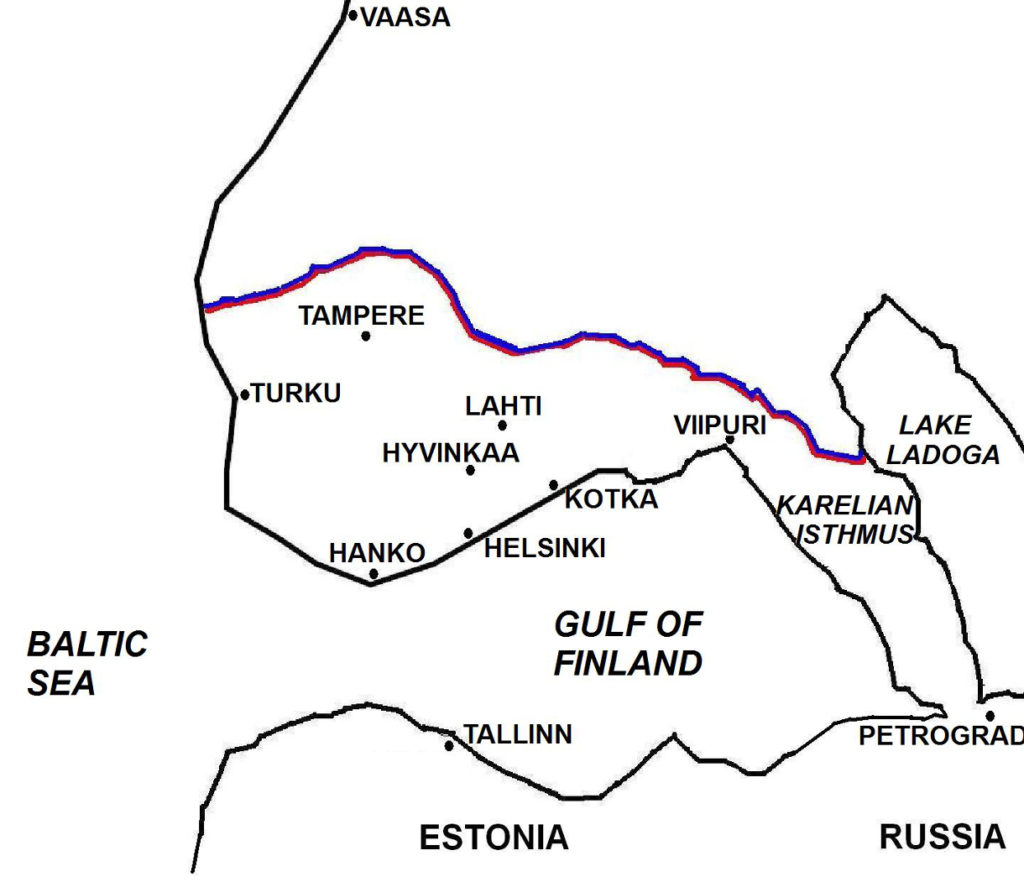Occurring nearly simultaneously with the White forces’ final offensive on Tampere, some 10,000 German Army troops of the Baltic Sea Division landed at Hanko, off the southern coast, on April 3, 1918; four days later, another German unit, the Detachment Brandenstein consisting of 3,000 soldiers, landed at Loviisa. The Germans moved rapidly toward Helsinki, taking Red Finland’s capital on April 13. German forces from the south and the Finnish (White) Army from the north then advanced toward Red strongholds north of Helsinki, capturing Lahti, Hyvinkää, Riihimäki, and Hämeenlinna by the third week of April 1918.

Finnish Civil War
(Taken from Finnish Civil War – Wars of the 20th Century – Volume 4)
By late April, Viipuri, Red Finland’s capital after evacuating Helsinki, also came under pressure from White forces. On April 29, 1918, a Finnish (White) Army offensive consisting of 18,000 troops captured the city, which effectively ended Red Finland as a sovereign entity. A few days earlier, Red Finland’s political and military leaders had fled the city into Soviet Russia, leaving behind some 15,000 Red Guards who were taken prisoner after the battle. On May 5, 1918, the Kymenlaakso region, the last major Red territory, fell when White forces captured Kouvola and Kotka. By mid-May 1918, the Karelian Isthmus was in White possession; in the wake of Red Finland’s defeat, thousands of socialist supporters fled to Russia, all the while subjected to attacks by White forces.
The war was over; some 38,000 lost their lives, 25% in the fighting, and 75% by war-related violence. Both sides committed many atrocities against supporters of the opposing side, acts which were carried out by military and paramilitary forces without the consent and participation of the civilian White and Red governments. The so-called Red Terror (by Red forces), which took place in territories of Red Finland, targeted conservative politicians, landowners, businessmen/industrialists, and other White supporters; some 1,600 were killed. The White Terror (by White forces) targeted socialist politicians and leaders, Red Guards, Red Finland officials, as well as Red Finland-allied Russian soldiers; some 7,000 to 10,000 were killed. White Terror also extended to the 80,000 Red supporters and fighters who were imprisoned after the war. Poor prison conditions and inadequate food rations led to some 13,000 prisoner deaths, and individual prisoners experienced as high as 20% to 30% mortality rates. While Red Terror was sporadic, random, and mostly involved personal motives, White Terror was much more systematic and organized.
